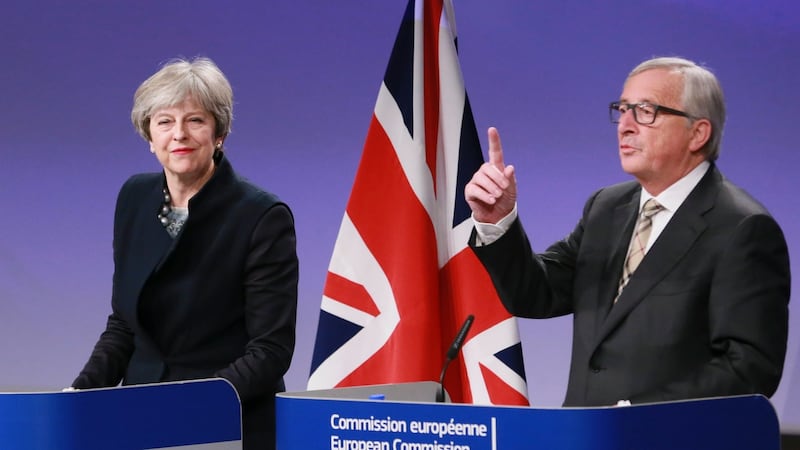So near, but so far.
Negotiators in Dublin and London had agreed a form of wording on the Irish Border agreeable to both and hopes rose that the deal could be announced after a meeting in Brussels between UK prime minister Theresa May and European Commission president Jean-Claude Juncker.
However, the deal foundered following an intervention by the DUP.

So just what is in play here, with the talks now set to continue in the hope that the deal can be rescued?
1. The problem:
The Border issue has been tricky because Britain has insisted it would leave the EU trading bloc – the customs union, which allows free trade in goods and the single market, which sets the rules and regulations underlying commerce across the EU. A border is generally needed between one trading bloc and another to monitor the flow of goods and the EU's one post-Brexit land border with the UK would lie in Ireland.
2. Alignment versus divergence - the key compromise:
Ireland has been looking for a range of commitments – on adherence to the Belfast Agreement and the continuation of the Common Travel Area between the UK and Ireland. However, the contentious issue was how to ensure free movement in goods. To achieve this, Ireland sought a UK commitment that there would be no divergence in customs and trading rules and standards North and South of the Border.
This would have meant the rules of the customs union and much of the single market regulations continuing to apply in the North.
One version of the draft text referred to a committment to “full alignment” which would have offered more protection to Ireland.
The last-minute compromise between Dublin and London was to change the commitment of “no divergence” to one of continued regulatory alignment in customs and trade rules across the Border.
The significance of this change in wording is debatable. No divergence would imply the North would have to remain subject to the rules and control of the EU customs union and single market. Promising “alignment” appears - in theory - to be a less exacting standard and was seen in London as giving the UK more leeway, because this might be achieved by coming up with some new regime that mirrored the EU’s one, rather than remaining subject to EU rules.
The Irish Government’s position was that, in practice, there was no real difference between the two wordings. But it seemed enough at lunchtime on Monday to break the logjam.
The UK commitment to maintain alignment was to be given in the context of there being “the absence of agreed solutions”. In other words, the way was left open for other routes to avoiding a Border to emerge in the trade talks, perhaps via a new UK-EU customs union. The way was also left often, perhaps, for some future rows.
3. What would this have meant in practice:
Maintaining the same regimes North and South of the Border would have avoided the return of physical checks on goods which would otherwise be needed if the UK left the EU trading bloc. What everyone assumes is that it would have meant the North effectively remaining in the customs union and subject to relevant EU single market rules, while the rest of the UK left.
Of course, the commitment of maintaining alignment could also have been achieved if the UK reversed course and decided to remain in the EU trading bloc, retaining membership of the single market and customs union, as many in business and politics are calling for. However, for the Brexit lobby this would negate some of their key goals, which include avoiding EU rules and the jurisdiction of the EU courts and, crucially, the ability to do free trade deals on its own terms with other countries around the world, such as the US.
4. The objections:
The DUP insists there can be no gap between the trade rules and customs regime that applies in the North and those applying in the rest of the UK. This is partly for political reasons, but they also fear that if a separate regime is introduced in the North, new checks would be needed on the trade of goods between the North and Britain to control goods moving between the two trading blocs.
5. Where now?
If a deal is to be reached in time for the summit on December14th-15th, then ideally it would be tied up by next weekend. If not, then the December summit will declare that not enough progress has been made and the talks will not be able to progress to the next stage. This would leave time dangerously short to negotiate a transition deal and find the basis for trade talks before Britain leaves in March 2019.
The difficulty of reaching a deal here remains, however, based on the UK’s plan to leave the EU trading block and the knock-on consequences of this, combined with the Conservatives relying on DUP support to remain in government.












